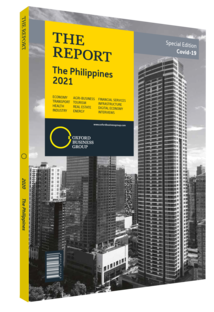Sanjiv Vohra, President and CEO, Security Bank: Interview

Interview: Sanjiv Vohra
Which factors help banks alleviate the economic implications of the pandemic?
SANJIV VOHRA: Banks have the necessary liquidity, capital and reserve ratios mandated by the central bank, Bangko Sentral ng Pilipinas (BSP), to provide finance to businesses throughout the economy. Importantly, the financial system is more resilient and reacted quicker to Covid-19 than to previous crises: during the Asian financial crisis of 1997-98, for example, the adequacy ratios of banks were close to 8% and interventions were slower. Capital adequacy ratios of commercial banks are now in excess of 15%, above the minimum BSP requirement of 10%. Additionally, the financial authorities were quick to respond to the pandemic by introducing the Financial Institutions Strategic Transfer Act, which created asset management companies to absorb bad assets from banks.
The BSP is better positioned to provide monetary and fiscal support than before. It has maintained an interest rate of 2.25% – the lowest in history – since late June 2020. This has provided liquidity to the system, and enabled banks to maintain solvency and support their clients with funding at manageable costs.
How have companies been affected by the pandemic, and how does this affect lending patterns?
VOHRA: The Covid-19-induced crisis is different from a normal recession and is instead similar to a war economy in which some sectors thrive, others struggle and some reinvent themselves. Those that prosper include certain corporations, which seek support from well-positioned banks. Telecom companies, for instance, invested in their networks through the construction of new towers and the introduction of 5G technology.
Companies in the second category experience solvency issues throughout the crisis, but recover business volume and revenue once the situation eases and consumer confidence returns. In the meantime, they need financial support. Construction and infrastructure firms fall under this category, as the country’s infrastructure gap needs to be narrowed.
The third group comprises companies that are the most affected by the crisis, necessitating changes to their business models. Certain trends will not return after the pandemic, and banks need to review these considerations as businesses transform their operations and adapt to the new normal.
To what extent has monetary policy been effective in maintaining the stability of the financial system?
VOHRA: The BSP was proactive and did not wait for the crisis to unfold before introducing mitigation measures. The bank pumped an unprecedented P1.5trn ($29.8bn) of liquidity into the system, restoring market confidence. As well as maintaining the 2.25% interest rate, the BSP reduced the reserve requirement ratio to 12%. There remains room for further monetary easing, if needed. The BSP also supported government programmes such as the P300bn ($6bn) repurchase agreement, and approved the allocation of an additional P540bn ($10.7bn) for the administration to fund further recovery initiatives.
In what ways have lockdowns and social distancing impacted the adoption of digital banking?
VOHRA: Covid-19 accelerated the adoption of e-payments and digitalisation, and financial institutions must ensure that customers do not return to the previous status quo once the pandemic is over. To do so, it is necessary to build trust in e-payments and make these platforms affordable: indeed, the rise of e-commerce was directly related to the lifting of fees. The government also operated mass cash transfer programmes during the crisis, and it is important that the use of such technology continues. The evolution of merchant payments is another priority. Philippine Payments Management is moving forward with a plan to facilitate app-based transfers from consumers to merchants.
You have reached the limit of premium articles you can view for free.
Choose from the options below to purchase print or digital editions of our Reports. You can also purchase a website subscription giving you unlimited access to all of our Reports online for 12 months.
If you have already purchased this Report or have a website subscription, please login to continue.

